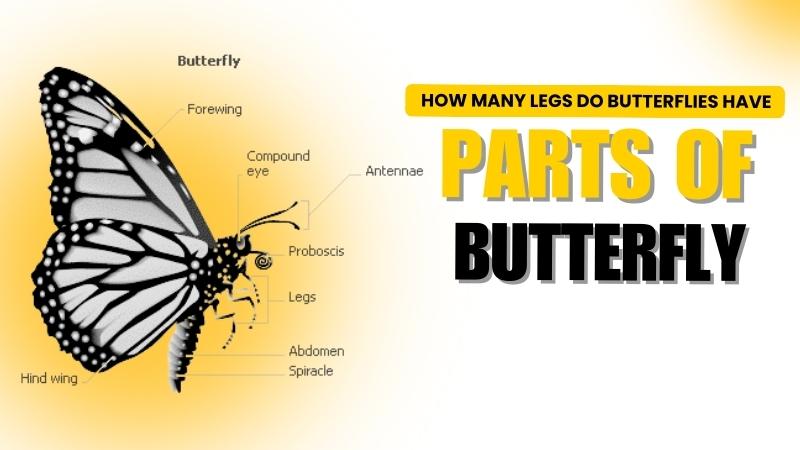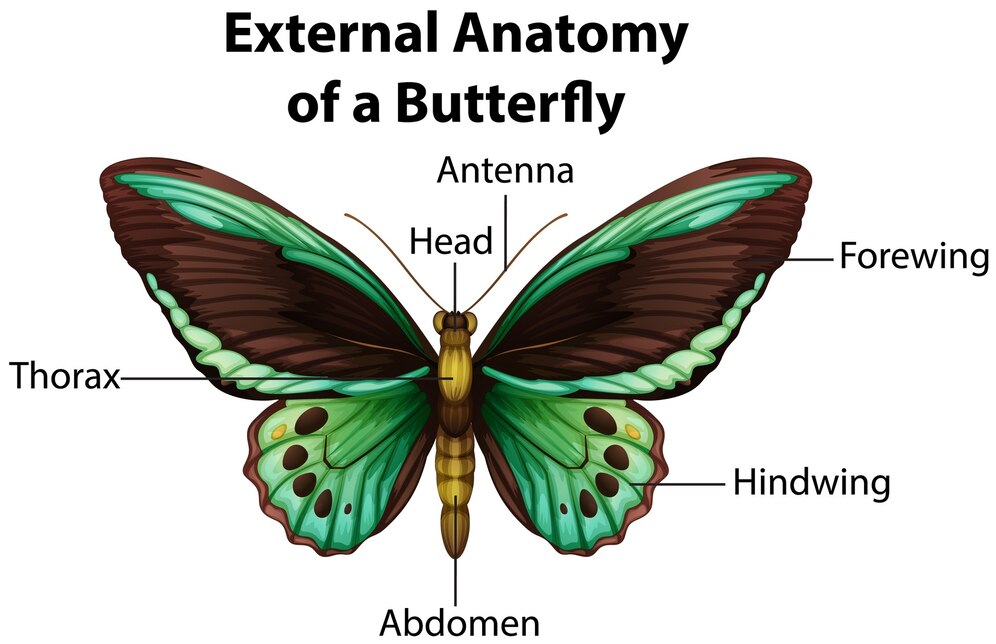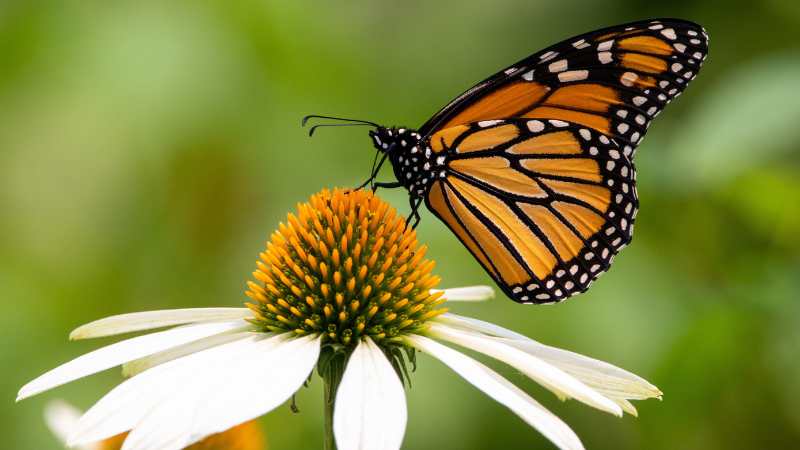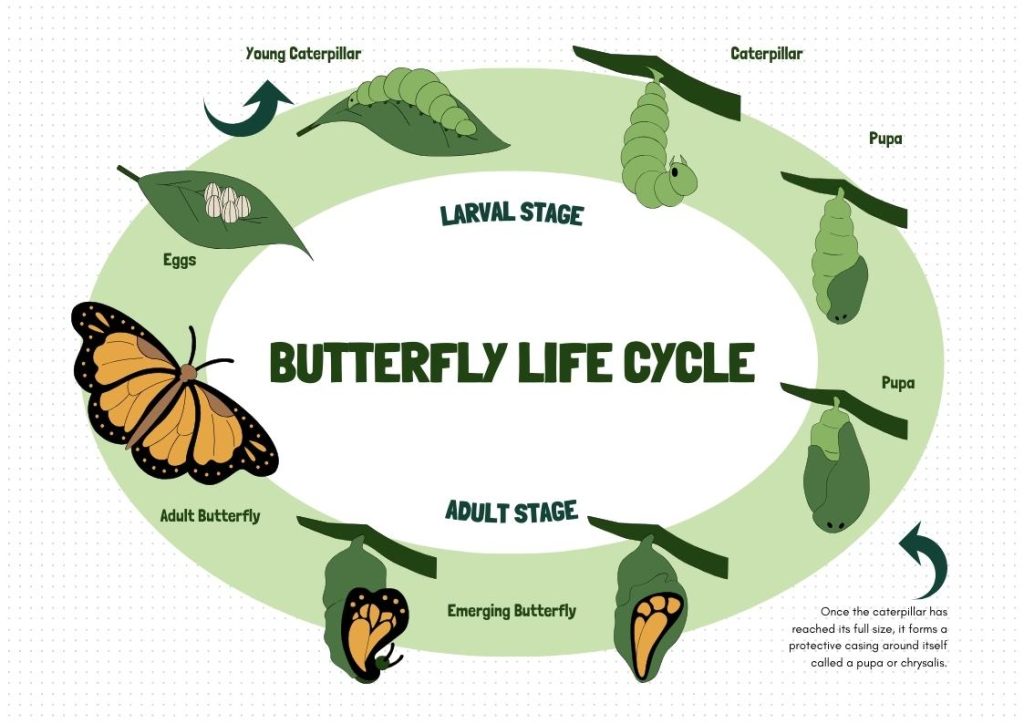
How Many Legs Do Butterflies Have
Butterflies possess a total of six legs. Butterflies belong to the insect class called Insecta.
This class has three pairs of legs connected to the body. Butterflies usually follow this structure. Some species in the Nymphalidae family, called brush-footed butterflies, appear to have only four legs. This is because their front pair is small and not used for walking.
Butterflies, like all other insects, possess six legs. They belong to the Insecta class. Insects have three main body parts: the head, thorax, and abdomen. They also have six legs.
An In-Depth Look at Butterfly Legs
Butterflies belong to the Lepidoptera order which includes butterflies and moths. The legs of their bodies connect to the thorax, which is the middle of their bodies. Each leg is made up of several segments:
— Coxa: This segment connects the leg to the main body.
— Trochanter: A small joint that allows mobility.
— Femur The largest part of the body, similar to the human thigh.
Tibia – Tibia Tibia: A thin section which aids in moving around.
— Tarsus: A foot-like structure that is equipped with hooks of tiny size to grasp surfaces.
Parts of the butterfly
The body of a butterfly has three major components: the head and thorax. The abdomen is the third. Each of these parts aids the butterfly to live and function.
butterfly parts names
1. HeadThe head is the butterfly’s control point. It is composed of:
— Antennae Antennae: Two structures that allow butterflies to sense their environment, smell, and maintain balance.
— Eyes: Butterflies have eyes that are compound and permit them to see multiple shades and can detect the movement.
— Proboscis Proboscis: A mouth that is long and tube-like which butterflies use to sucking nectar from flower petals. It is rolled up beneath the head when it is not being used.
2. Thorax
The Thorax is the middle region of the body that is that is the one responsible for moving. It is comprised of:
The – Legs The Butterflies have legs with six legs, however some species have shorter front legs. Legs help them perch to taste and wash themselves.
The – wings: Butterflieshave four wings (two forewings and two hindwings) with tiny scales, which create colorful patterns. The wings allow them to fly and help them escape danger.
3. Abdomen
Abdomen is the lower portion of the butterfly’s body. It is comprised of:
• The digestive system helps process food and absorption of nutrients.
— Organs for reproduction used for mating and egg laying.
— System of respiration tiny holes referred to as spiracles let butterflies breathe.
Each component of a butterfly’s body is essential to find food in flight, reproducing, and living in the environment.

Unique Characteristics of Butterfly Legs
– Taste Sensors:
Certain butterflies, such as monarchs and swallowtails, are equipped with special sensors that are located on their legs. The sensors allow them to “taste” the plants they are landing on by detecting chemical signals.
— Cleaning Job: Butterfliesfrequently employ their front legs to clean their eyes and antennae.
– Perching and. Walking The majority of butterflies don’t stroll around very often. They typically use their legs to perch on things, grab flowers, and to search for food.
Noteworthy Exception: Brush-Footed Butterflies
A fascinating subgroup, called Nymphalidae which is also known as brush-footed butterflies is believed to have just four legs. Actually, they have six legs, however their front legs are smaller and is closely placed in relation to their bodies. The front legs, which are smaller, aren’t designed for walking but assist the animal to sense things. Examples of butterfly with a brush include:
Monarch Butterfly (Danaus plexippus)
– Painted Lady (Vanessa cardui)
– Blue Morpho (Morpho peleides)

Where are butterflies based?
Butterflies can be found in numerous places across the globe which includes grasslands, forests gardens, meadows, mountains, wetlands, and deserts. Their habitats depend on weather, food supply, in addition to the breeding environment.
Common Butterfly Habitats
Tropical Rainforests forests are home to a variety of butterflies due to the warm and humid climate and the abundance of vegetation.
— Meadows and Grasslands Butterflies thrive there due to the numerous nectar-producing flowers.
Gardens and Parks Many butterflies love the flowers that bloom in city parks.
— Woodlands and Forests Certain butterflies prefer the shade of areas that have plenty of caterpillars.
• Wetlands and Riverbanks Wet areas attract butterflies, which require mud to obtain minerals.
Mountains and Hills: Some species be found at higher altitudes, where temperatures are cooler.
Deserts: Only a handful of butterflies are able to survive in dry areas by finding food close to oases or plants.
Butterflies can be found across every continent, with Antarctica being the only exception. Antarctica because they prefer warm temperatures. Their destinations depend upon the supply of sweet blooms as well as host plants to caterpillars, and a suitable climate.
FAQ about Butterfly Body Parts
Do butterflies have six legs?
The legs of butterflies are six. Like all insects are part of the class Insecta that has three sets of legs that are attached to the middle of their bodies.
number of legs for butterflies
Certain species of butterflies, such as those belonging to the Nymphalidae family, have tiny front legs. They don’t utilize these legs to walk. This causes them to appear as if they have just four legs but in reality, they have six.
Butterflies use their legs to sitting, grabbing onto surfaces, smelling food using sensors that are on their feet and even cleaning their bodies.
The colour of a butterfly’s body is dependent on the species it belongs to. The body of a butterfly could be black, brown gray, yellow red, blue, green or a combination with these colours.
What is the color of the butterfly’s body
Factors That Affect Butterfly Body Color:
— Specific Variation of Species: Different species have distinct hues. For instance:
Monarch Butterfly Monarch Butterfly has a black body, with white spots.
Blue Morpho Blue Morpho has a dark brown body, with blue reflections.
Zebra Longwing – The Zebra Longwing has a black body and yellow markings.
Camouflage & Protection Certain butterflies have dull colors to blend into their surroundings. Some are bright and alert to predators that they’re poisonous.
– Scales and Pigments: Butterflies have tiny scales on their bodies, which are filled with pigments or reflect light giving diverse shades.
Every butterfly species is unique in its color, that helps them stay alive, attract new mates, and protect itself from predators.
How many wings does the butterfly have?
The butterfly has four wings, two in front and two on the back. The wings are attached in the center of the body. They are tiny and have scales that produce beautiful patterns and colors. Butterflies use their wings in order to fly, remain balanced and defend themselves.
Certain butterflies have wings that are clear or camouflaged to protect themselves from predators, whereas other butterflies have bright colors that warn creatures that they’re poisonous. The wings also aid in warming to the sunlight prior to flying. Each species has distinct shapes, sizes and patterns, making butterflies of the most stunning insects found in nature.
How many feet can a butterfly cover?
A butterfly is a creature with six legs, just like all insects. Each leg is capped with tiny feet, referred to as tarsi. These aid the butterfly to hold it and move.
They also are equipped with sensors that let butterflies “taste” food by standing on flowers or leaves. Certain butterflies, including those with brush feet belonging to the Nymphalidae family are able to walk with tiny legs, which they don’t utilize for walking. This gives the impression that they only have four feet. However, all butterflies have six feet.
Life-cycle butterfly

The butterfly cycle is comprised of four phases: egg, caterpillar, chrysalis and adult butterflies.
Eggs – The butterfly places tiny eggs on the plant stems or leaves.
A caterpillar egg develops into a caterpillar. It is a fan of leaves and sheds its skin a few times.
Chrysalis – The caterpillar develops the chrysalis before changing inside.
Adult Butterfly Fully developed butterflies emerges and dries its wings and then flies around to find food and friends.
This cycle will continue to ensure that butterflies are able to survive.
How many eyes do butterflies possess?
They have eyes that are both two and each one has tiny lenses, called Ommatidia. They can perceive a variety of colors, including ultraviolet light that humans cannot see.
Butterflies use their eyes identify flowers, ward off predators and locate their friends. Their eyes help them move about and locate food quickly. In addition to their compound eyes, butterflies also have eyes (ocelli) on their heads which allow them to detect dark and light.
In Summary
Butterflies generally have six legs. However, in certain species the front pair of legs is reduced. The legs of the butterfly are essential to perform tasks such as tasting, gripping surfaces and ensuring cleanliness. If you’d like more information, don’t hesitate to inquire!





